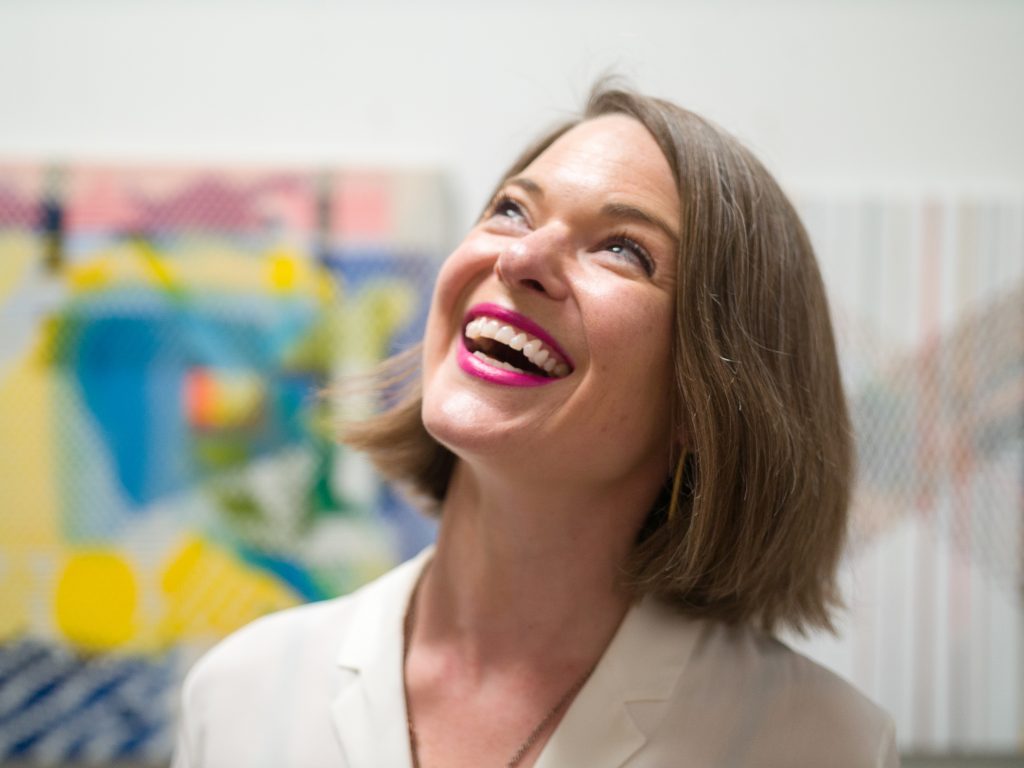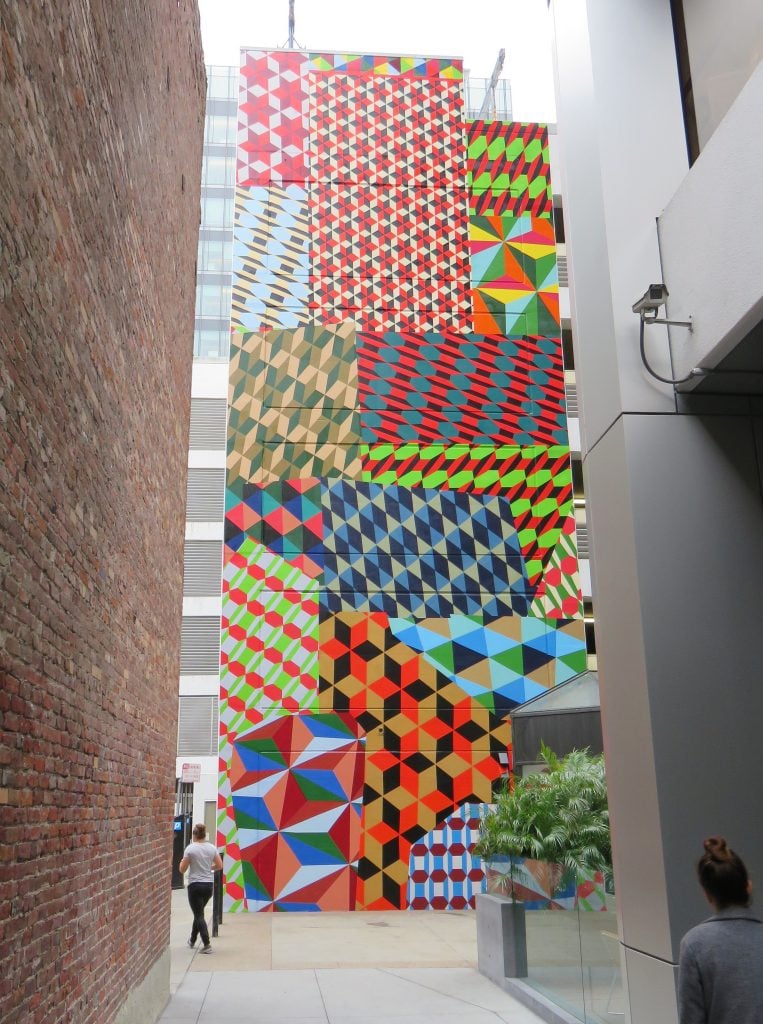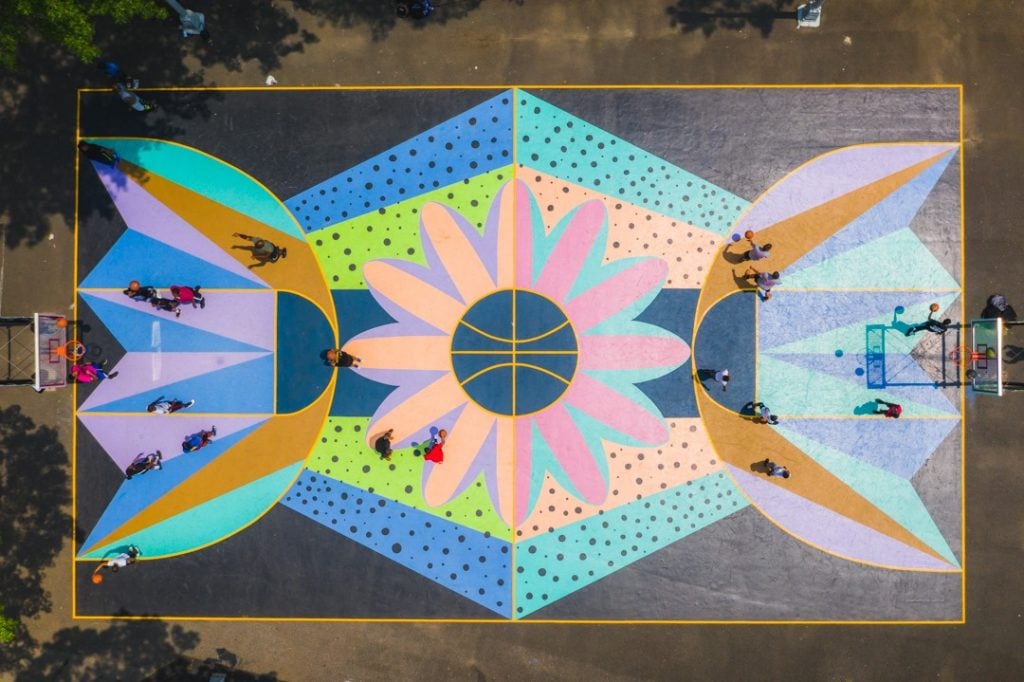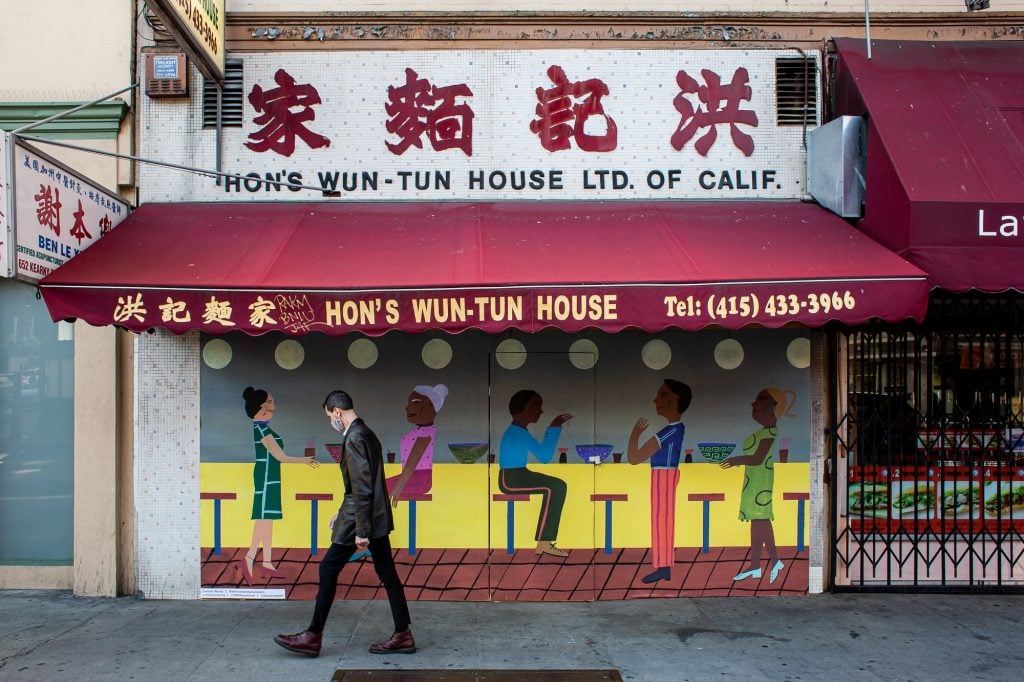People
How Facebook Curator Jessica Shaefer Uses Art to Bring Empathy Into the Social Network’s Tech-Driven Universe
Learn what it's like to run an art program at one of the world's top tech companies.

Learn what it's like to run an art program at one of the world's top tech companies.

Maria Vogel

In these turbulent times, creativity and empathy are more necessary than ever to bridge divides and find solutions. Artnet News’s Art and Empathy Project is an ongoing investigation into how the art world can help enhance emotional intelligence, drawing insights and inspiration from creatives, thought leaders, and great works of art.
Facebook’s art curator Jessica Shaefer, the daughter of a New York-based artist, was once reluctant to become a part of what she had long viewed as a challenging and veiled industry. But after following her own pursuits for many years, she was pulled back to art in her mid-20s when she began working for Vito Schnabel, the Manhattan art dealer who was at the time just beginning his art career. For a long time, Shaefer worked as a curator, art dealer, and “almost every other art world job you could possibly have,” taking time to get to know the ins and outs of the the industry and thinking she would stay in Manhattan long-term. But in 2016, another unexpected leap propelled her art career forward: she left for Silicon Valley, excited for the chance to infiltrate the tech world with fine art at Facebook.
As head of public programs and partnerships for Facebook’s art division, Facebook Open Arts, Shaefer has overseen substantial growth of art-centric programming within the company over just the past few years. Putting the abundant resources of the tech giant to good use, Shaefer’s role goes beyond securing commissions and exhibitions for the company’s offices, and includes supporting the work of local artists and art organizations in cities around the world.
Recently, we chatted with Shaefer about her unique role, the merging of tech with art, and how empathy drives both her professional and personal lives.
How did you come to have a career in the arts?
My father is an artist, and I was born in New York City and grew up understanding the art world from a working artist’s perspective. Going to art shows in the ’80s and ’90s as a child, I tried to understand the world that my dad was in and had a hard time with that. I got to the point where I did not plan on having a career in the arts because of the struggles and challenges and opacity I witnessed. I felt that it wasn’t my world and I was making an active decision not to engage with it.
I went off and studied philosophy and classics and French and thought that I’d be going down a much more academic path. I moved to Europe for a few years then back to New York, where I started working with Vito Schnabel, who was at the time just starting out as a curator and dealer. I fell back into the art world really unexpectedly to be honest.
I’ve had a roundabout path to and then through the art world. After working with Vito for several years, I ran a small gallery on the Lower East Side, then transitioned to Creative Time because I decided that non-profit and politically and socially engaged art was my passion. I pride myself to some extent that I’ve had almost every art world job you could possibly have.

A San Francisco-based mural by artist Barry McGee. Photo courtesy Shaefer.
When did Facebook first take an interest in art and what does your role entail?
The arts program at Facebook started very organically when Drew Bennett, an Oakland-based artist, did a mural at headquarters around 2007. There was such a great response to it in the years that followed, so he proposed starting an artist-in-residence program where we would invite local artists to come into our offices and create large-scale, site-specific installations. The program really kicked off in 2012, so it’s been almost a decade of working with nearly 700 artists globally to create brand-new commissioned work. We started in our headquarters and now we have a large global team of almost 40 people based in four continents who are programming work within offices and increasingly outside of Facebook’s walls as well.
My role with Facebook Open Arts specifically entails leading public programs and partnerships. I’ve been in this role for about two years since starting at Facebook in a more straightforward [internal] curatorial role. The program got to a point where we wanted to evolve, and my passion leans toward more public-facing art that can be accessible to lots of diverse audiences and also has socially focused meaning so that there is engagement beyond the work itself.
How do you plan programming at Facebook?
There are multiple approaches. What’s exciting is that the program is continually evolving, adding new team members, and new initiatives. Right now, Open Arts features artist commissions, workshops for our employees, and a robust design department. We have different people working on different things, but we all come together around figuring out what teams we want to be focusing on, and what regions are becoming more of interest to Facebook.
As we expand offices in certain hub cities, we’re going to look towards artists and partners in those particular areas. We want to show up as good neighbors. We want to be responsible in regards to the local communities that we’re coming into and understand that they each have distinct and unique art ecosystems. How can we support the local artists who might not be getting the platforms, the recognition, the support, and the resources that other artists who are more established are getting? That’s where we can step in and make a difference and provide opportunities to deserving artists who might not get them otherwise. In return, this brings a multiplicity of rich voices back to Facebook. A lot of Facebook employees may not have a relationship with the arts per se, but this is an opportunity to bring art to where they are and see what kinds of interesting conversations come out of that.
We really look to our partners to try and understand what they need, what they’re excited about, what they want to do, and how we can be authentically responsive to the community’s wants and needs rather than just come in as a big corporation and say, “Here’s a big art project, you’re welcome.” We want to do the work of listening and our due diligence to ensure we are true, authentic partners.

In 2019, Facebook Open Arts supported artist Saya Woolfalk and local youth group Publicolor in their creation of a basketball court mural in Marcus Garvey Park in Harlem. Photo courtesy Facebook.
What are the rewards and challenges of running art programs in the tech world?
For me, coming from a more traditional art-world background, it was really interesting to see how there seemed to be a dichotomy set up between artists and tech people. The narrative I kept hearing was that these were two separate worlds that didn’t care about each other. It’s just not true. There’s so much overlap and common language. These are groups of people who are innovators and thought leaders; they’re poking holes in preconceived notions, they’re asking tough questions and not necessarily looking for answers. There are a lot of parallels [between the two fields]. What’s been exciting about working at Facebook is identifying those bridges, those commonalities, and exposing the people who work in the tech world to aspects of art they may not be familiar with outside of the market.
The work we’re doing here also has a lot to do with translation, which I think speaks to the idea of empathy. How do we understand each other’s languages, how do we understand each other’s stories? And how do we benefit from these new perspectives that might make us uncomfortable or put us in a space of unknowing for a little while? A lot of artists and technologists might be used to being the smartest person in the room or used to being the expert at the table. There’s an act of humility in saying, “I don’t know. I’m coming to this with a thirst to learn.” That’s been really enriching to be a part of.

Chelsea Wong’s “Art For Essential Workers” mural (2020). Art for Essential Workers was an initiative by Facebook Open Arts and San Francisco-based artist collective 100 Days Action that commissioned 26 local artists to create temporary artworks on the plywood fronts of businesses shuttered due to the pandemic, conveying messages of optimism and solidarity with the city’s essential workers and small business owners. Photo courtesy Facebook.
Looking at art has been recognized by some as an effective way to cultivate emotional intelligence. Is that a skill you’ve worked to develop? If so, how does it manifest in your professional life?
I think that, generally speaking, any kind of aesthetic experience, whether viewing a piece of art or a dance performance or listening to music, creates a sense of awe and wonder that enables us to further understand what our fellow human beings are thinking and feeling. There’s so much happening in any kind of artwork that might make us a little uncomfortable, might put us in a sense or space of unknowing. But then we get to hear and see another person’s perspective and that really moves us toward a greater sense of empathy.
I have a personal drawing practice that’s more meditative than anything else and it’s changed the way I look at the world. I think that art can really be an intervention to complacency and disrupt our fixed notions of being in the world, which opens up paths of empathetic connection with others. Art tells us how to be in relation to one another and to the wider world, and sometimes even in relation to ourselves.